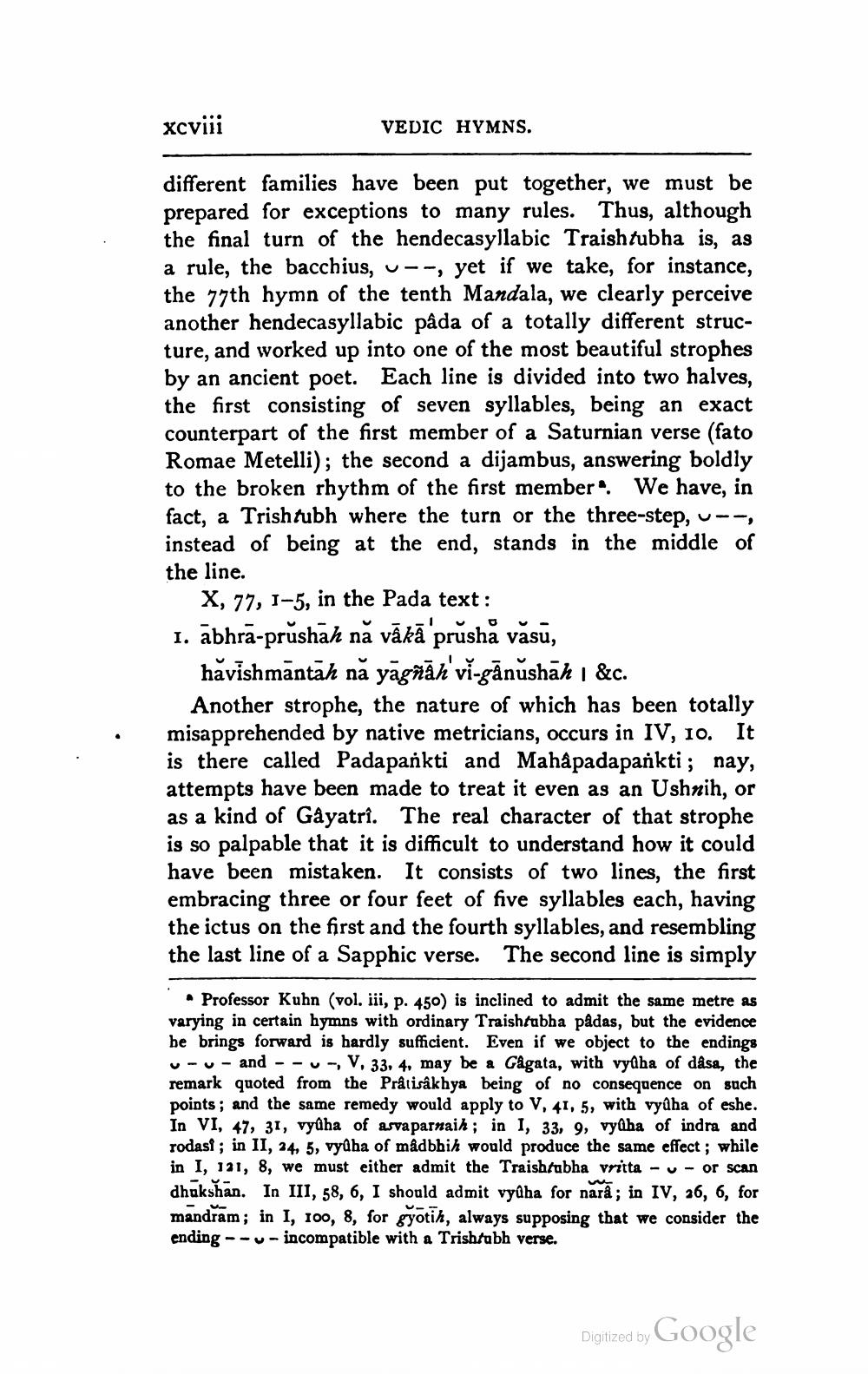________________
xcviii
VEDIC HYMNS.
different families have been put together, we must be prepared for exceptions to many rules. Thus, although the final turn of the hendecasyllabic Traishtubha is, as a rule, the bacchius, u--, yet if we take, for instance, the 77th hymn of the tenth Mandala, we clearly perceive another hendecasyllabic pâda of a totally different structure, and worked up into one of the most beautiful strophes by an ancient poet. Each line is divided into two halves, the first consisting of seven syllables, being an exact counterpart of the first member of a Saturnian verse (fato Romae Metelli); the second a dijambus, answering boldly to the broken rhythm of the first member. We have, in fact, a Trishtubh where the turn or the three-step, u--, instead of being at the end, stands in the middle of the line.
X, 77, 1-5, in the Pada text: 1. ābhrā-průshāh nă vākā průshå văsū,
hävishmāntah nă yāgñāh vi-gānushāh i &c. Another strophe, the nature of which has been totally misapprehended by native metricians, occurs in IV, 10. It is there called Padapankti and Mahậpadapankti; nay, attempts have been made to treat it even as an Ushnih, or as a kind of Gayatrî. The real character of that strophe is so palpable that it is difficult to understand how it could have been mistaken. It consists of two lines, the first embracing three or four feet of five syllables each, having the ictus on the first and the fourth syllables, and resembling the last line of a Sapphic verse. The second line is simply
Professor Kuhn (vol. iii, p. 450) is inclined to admit the same metre as varying in certain hymns with ordinary Traishtubha padas, but the evidence be brings forward is hardly sufficient. Even if we object to the endings u-u- and --U-V, 33, 4, may be a Gågata, with vydha of dåsa, the remark quoted from the Prátisakhya being of no consequence on sach points; and the same remedy would apply to V, 41, 5, with vyûha of eshe. In VI, 47, 31, vyûha of asvaparnaih; in I, 33, 9, vyllha of indra and rodasi; in II, 24, 5, vyûha of madbhih would produce the same effect; while in I, 181, 8, we must either admit the Traishtabha vritta - v- or scan dhakshan. In III, 58, 6, I should admit vyûha for nara; in IV, 26, 6, for mandram; in I, 100, 8, for gyotih, always supposing that we consider the ending --v- incompatible with a Trishtabh verse.
Digized by Google




